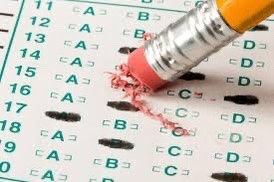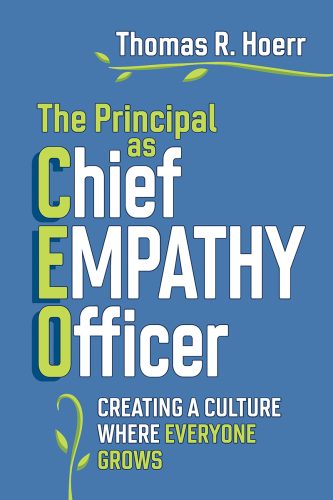
Multiple Intelligences Newsletter, Vol 31, No 4
February 12, 2022
Dear MI Advocates,
Here’s a belated Happy 2022! Let’s hope that life is a bit more boring than it was in 2021.

But things aren’t boring in education at all. Beyond the debates and inequities that the pandemic has caused, we are seeing a reconsideration of the role of standardized tests, at least in college admissions decisions. The headlines* yell significance: “Harvard Has Dropped Its SAT and ACT Admissions Requirements Until 2026” and “University of California System Ends Undergraduate Admissions Testing for Good.” Of course, even though these actions focus on college admissions, my hope is that the vitiation of the role of standardized tests will begin to ebb to K-12 systems. Thank goodness!
To briefly preach to the MI choir, for too long the role of standardized tests has limited our views of students to their linguistic and logical-mathematical intelligences, those which are assessed through multiple-choice questions. Of course, we know that most problems are complex and require skills beyond these; too, we know that children have an array of strengths that can be used to solve problems in the real world. The narrow scope of standardized tests does not reflect these understandings.
I asked Howard Gardner, the conceptualizer of MI theory, what he thought of these changes, and here is his response:
“For its time, the SAT tests were a reasonable solution to the problem of admissions – – particularly identifying students of promise who came from less well known private (or public) schools. But after 75 years, we know the weaknesses of these instruments as well as the ways in which they are inevitably gamed. And so I shed no tears for the loss or suspension of the SAT. If I were the czar of admissions to a selective non-vocational college, this is what I would do:
- look for signs of intellectual curiosity, as manifest by how the student has spent time over the last several years; this include engagement and creativity in the arts, which are activities of the mind.
- give special credit for students who have done extraordinary service to their community, which includes family needs.
- drop any special advantages for athletes or legacies; Cal Tech and MIT don’t consider these criteria and they are doing fine.”
Howard continues, “For any admissions officer who pledges to pursue these goals, I’ll happily give a copy of Wendy Fischman and my soon-to-be published book, The Real World Of College.”
No surprise, Gardner’s recommendations seek to ascertain the qualities that will help students succeed in school and will lead to success in life. But ascertaining these qualities isn’t easy. Indeed, the validity, simplicity, and low cost of standardized tests is part of their allure. It would be much better, far more reliable, to conduct individual interviews with each applicant, but that becomes problematic when hundreds, even thousands, of students apply to a school.
Gardner’s suggestion of “extraordinary service to their community” particularly resonates with me because it begins to get to the essence of character and personality. Students who have already demonstrated a commitment to helping others – including caring for younger siblings or older family members – are likely to be positive additions to any student body. Similarly, Wendy Fischman, his co-author noted above, observed that a commentator of CNN had suggested asking for students’ peers to offer recommendations about a college applicant. Friends, after all, can provide the insights that educators may miss.
We often can learn a lot about a person by what they want to know. When I was part of a team interviewing teacher applicants at New City School, we would end the interview by asking, “What questions do you have?” The candidates’ inquiries spoke volumes about their priorities.
Health insurance and salary are certainly important factors in taking a job, but we weren’t likely to hire a candidate who began questions by asking about this. But candidates who wanted to know more about professional growth opportunities at New City School, the ways that we used MI to reach students, or how we integrated human diversity in our curriculum were much more likely to become part of our team. So I wonder, what questions raised by high school students would make a positive statement? What else should we be asking or soliciting?
I would love to hear your questions – or answers!

ASCD Conference
If you’re going to be coming to the Annual Conference in Chicago, March 18-21, please join me on Saturday, March 19, at 10:45 or 2:00. I will be presenting “Framing A School’s Culture Through Empathy,” drawing from my new book, The Principal As Chief Operating Officer: Creating A Culture Where Everyone Grows. I hope to see you then!
Stay safe and let me know how you would decide who is admitted to your school!
TOM
Thomas R. Hoerr, PhD
Facilitator of the ASCD MI Network
Scholar In Residence, UMSL
www.thomasrhoerr.com
This network is sponsored by ASCD as part of their effort to improve the quality of education for all children.
ASCD PICs (Professional Interest Communities) are member-initiated groups designed to unite people around a common area of interest in the field of education. PICs allow participants to exchange ideas, share information, identify and solve problems, grow professionally, and establish collegial relationships.
You can learn about ASCD’s networks, publications, conferences, workshops, and the dialogues sponsored by ASCD at www.ascd.org. You can also register for the free, daily ASCD SmartBrief.
